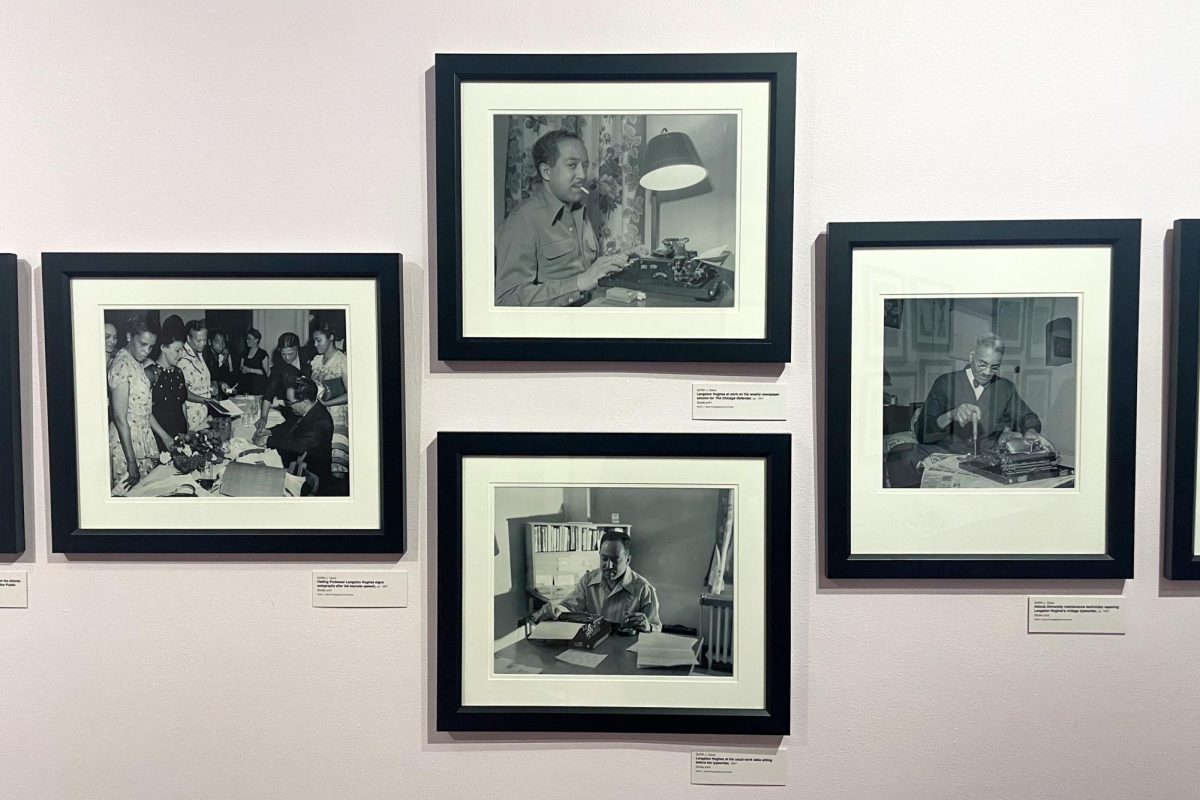The Harlem Renaissance as a creative, cultural movement was extremely influential in changing perceptions of Black culture and consciousness across the United States and internationally. Two pioneers of the Harlem Renaissance were poet Langston Hughes and photojournalist Griffith Davis. The Schomburg Center for Research in Black Culture’s exhibition “The Ways of Langston Hughes: Griff Davis and Black Artists in the Making” is a remarkable journey of the relationship between Hughes and Davis, highlighting the life and work of each through Davis’ lens.
The exhibition featured at the Schomburg Center is adapted from a traveling exhibition that originated at the Florida Museum of Photographic Arts, titled “Griff Davis-Langston Hughes, Letters, and Photographs, 1947 – 1967: A Global Friendship” which was put together by Davis’ daughter Dorothy M. Davis.
Davis took all the photographs featured in the exhibit, portraying Hughes’ professional and personal lives with a focus on the bridging of the poet’s connections with social, political and creative environments. The exhibition chronicles Hughes’ life beginning in Harlem, where he worked as a writer. Transitioning to his time in Atlanta, the exhibit follows Hughes to when he was a visiting professor at Atlanta University, where Davis was his student. Here they developed a mentor-mentee relationship, later evolving into a long-lasting friendship.
The exhibition features the 1948 cover of Ebony Magazine that showcases Nat King Cole’s honeymoon with Maria Cole, which was shot by Davis. It was through a recommendation by Hughes that Davis got his role as the first roving editor at Ebony Magazine, a lifestyle magazine covering Black life in the United States. Also featured is the story “Simple Takes a Wife,” part of “The Best of Simple” by Hughes, which was inspired by the marriage between Griffith and Muriel Davis.
Davis’ photographs also capture the relationships Hughes forged with other Black creatives, intellectuals and political figures during the Harlem Renaissance, including jazz musician Dizzy Gillespie, singer Odetta and singer Nellie Lutcher.
While the “The Ways of Langston Hughes” centers around the relationship between Hughes and Davis, it also does an incredible job of commemorating the work and impact Davis had on international Black identity. One notable moment of the exhibit is Davis’ photograph featuring Vice President Richard Nixon and Martin Luther King Jr. meeting in 1957 on Ghana’s first Independence Day, which was extremely controversial. At the time, U.S. political leaders did not want the photo to get circulated in the media because of Kings’ involvement in the Montgomery bus boycott a few months prior.
It is through the archival letters featured in the exhibition that really showcase the relationship between Hughes and Davis. These correspondences, which spanned over 20 years, reveal just how close the two were to each other. The letters detail updates about their lives and work that they sent each other while abroad. One of the remarkable letters showcases Hughes requesting from Davis a list of African writers and short stories to feature in his anthology that would become “An African Treasury.”
In addition to the correspondences, the collection also includes poetry, magazine covers and other archival materials from the Schomburg Center’s archival collection.
“The Ways of Langston Hughes: Griff Davis and Black Artists in the Making” is on display until July 8.
Contact Leila Anderson at [email protected].


























































































































































